
by HEC Team | Feb 15, 2016 | 2016, News
JOIN US AT
The Maui Arts & Cultural Center, Maui
The Mayor’s Office of Economic Development, Maui County and Maui Economic Development Board (MEDB) are hosting the third annual Maui Energy Conference, March 16-18, 2016 at the Maui Arts & Cultural Center. As Maui’s leading event for the renewable energy industry, the 2016 Energy Conference provides a unique opportunity to share insights with the industry’s thought leaders while networking and conducting business, all under one roof.
In this fast-changing marketplace, the conference aims to promote environmentally safe and economically sustainable renewable energy solutions for Maui, Hawaii, and the nation. “The Conference will bring together some of the best minds in the energy sector from the county, the state and the nation,” said Frank De Rego Jr., Director of Business Development Projects at MEDB and member of the conference program committee. “The focus of discussion will be on achieving the Portfolio Standard for Hawaii Clean Energy Initiative’s 100% Renewable Energy by 2045, and its implications for the state’s energy future. The strengths of the conference over the years have been the high quality of its speakers and panelists as well as ample time to network.”
As the movement toward sustainable renewable energy gains momentum, join the energy experts and stakeholders to learn about the latest advances in clean energy. Learn how Hawaii plans to implement its new energy planning model. Learn how the model applies to your own energy goals. The conference will seek answers to the following questions: Are these targets realistic? Are the utilities on board? How do we mitigate disruptions of energy supply and price while we transition from carbon-based fuels to renewables? How important is having a diversified portfolio of renewable energy sources? How much will this really cost?
“The Renewable Portfolio Standard tells us when to achieve 100% renewables,” said Conference Program Committee Chair Doug McLeod. “This conference looks at all the other questions: How, Where, Why, and Who Pays are just a few of the obvious issues. Within How and Why are important sub-questions about fairness and respect for Hawaiian culture and the ‘aina.’”
An impressive program has been assembled with notable speakers. Bill Ritter Jr., former Governor of Colorado and founder and current director of the Center for the New Energy Economy at Colorado State University, will present the keynote on “Powering Forward: What Everyone Should Know About America’s Renewable Energy Revolution.” Another invited presentation on “The Path to Moving Forward to 100% Renewable Energy” will be given by Jon Wellinghoff, the former Federal Energy Regulatory Commission Chair, now an energy law attorney with Stoel Rives LLP. “Solar is growing so fast it is going to overtake everything,” asserted Wellinghoff.
Jared Stigge, Vice President of C.H. Guernsey & Company, will be presenting “The Guernsey Report: An Analysis of Alternative Utility Models for Maui County.” In the same session a representative of the Hawaii State Legislature will address the idea of a Maui municipal utility.
The conference also includes sessions on such topics as: Defining 100% Renewables; Community Acceptance of 100% Renewables; The Social Impacts of Pursuing a 100% Renewable Future; Educating Toward 100% Renewable Energy; Investing in Hawaii; The Hawaii Renewable Experience—What Can Be Replicated; Integration of Distributed Energy Resources; and Maui: A Case Study—Is This Where We’re All Headed?
Mark Glick has joined returning members Bash Nola, Colton Ching, Jay Griffin, Jonathan Koehn, Holly Benz and Frank De Rego Jr. on the 2016 conference planning committee. The Hawaiian Electric Companies will be represented by speakers Colton Ching, Vice President for Energy Delivery, and Shelee Kimura, Vice President for Corporate Planning and Business Development. Jonathan Koehn, the Regional Sustainability Coordinator for the City of Boulder, will also return as a speaker.
The exhibition segment of the conference gives networking opportunities to participants who want to generate business or collaborate to address common issues and concerns. The conference’s third day will move outdoors with two optional Maui Sustainability Mobile Workshops.
REGISTER NOW
Contact Us
Visit us online or contact Sandy Ryan, Conference Director, at 808-875-2318 or by email.

by HEC Team | Feb 8, 2016 | 2016, News
Originally posted on Ililani Media
The third annual Maui Energy Conference will be held from March 16-18, 2016 at the Maui Arts & Cultural Center. The first and second conferences were very memorable.
“The RPS [Renewable Portfolio Standard] tells us when to achieve 100% renewables. This conference looks at all the other questions: How; Where; Why; and Who Pays are just a few of the obvious issues. Within ‘how’ and ‘why’ are important sub-questions about fairness and respect for Hawaiian culture and the ‘Aina,’” according to Conference Program Committee Chair Doug McLeod.
Read the full article on Iliani Media
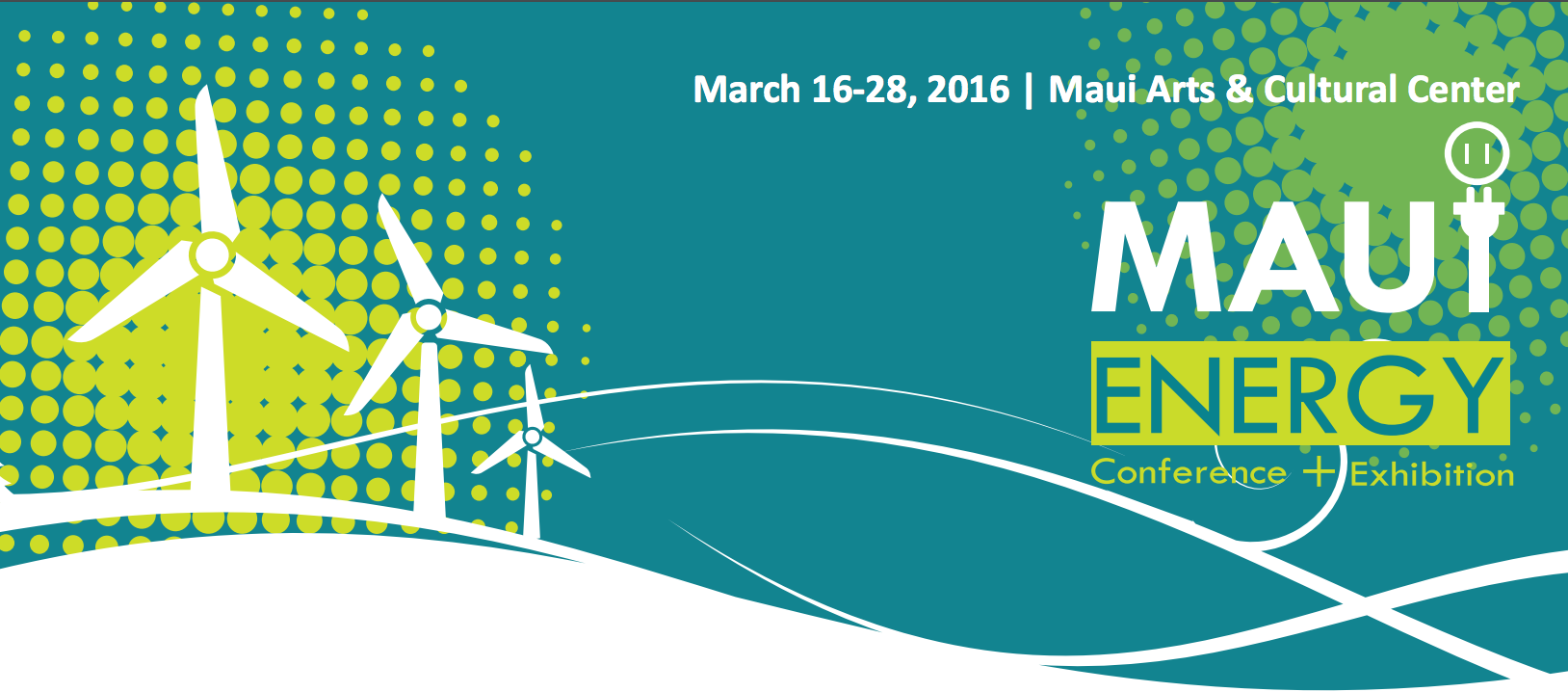
by HEC Team | Jan 28, 2016 | 2016
Time is running out for early bird registration savings for the 2016 Maui Energy Conference. Register now through the end of January and save $100.
REGISTER NOW
Why Attend the 2016 Maui Energy Conference?
- Gain a competitive advantage—learn from thought leaders about key issues in the industry
- Connect and collaborate—forge partnerships to address common issues and concerns
- Showcase your organization—generate new business through Sponsorship and Exhibiting
We’ve assembled an impressive program, noted speakers, and plenty of networking opportunities. Download the Conference Announcement

by HEC Team | Jan 19, 2016 | 2016, News

We are pleased to welcome Jon Wellinghoff to the Maui Energy Conference.
Immediate past Chairman of the Federal Energy Regulatory Commission, Jon Wellinghoff is an internationally recognized energy law attorney and clean tech energy expert.
He consults internationally to energy policy leaders in the U.S., China, Australia, and Europe, and has clients with interests worldwide. Domestically he is participating in the New York REV process initiated to reform the electric utility distribution model. Jon recently co-authored with one of his clients an article published in the Public Utilities Fortnightly describing a new structure for operating an electric distribution utility incorporating an independent system operator to better allow for the deployment of distributed energy resources like solar PV, energy efficiency and demand response to end use consumers. This market based model is patterned after the independent system operators or “ISO’s” created by FERC in wholesale electric markets.
Jon represents clients in an array of emerging energy technology fields including energy storage, demand response, big energy data analytics, distributed solar PV, advanced transmission control technology, and waste heat recovery systems.
He served as General Counsel at the Nevada Public Utilities Commission (1998-2000), and served two terms as the State of Nevada’s first Advocate for Customers of Public Utilities. As Consumer Advocate, he authored the first comprehensive state utility integrated planning statute. That statute became a model for utility integrated planning processes across the country. He was also the primary author of the groundbreaking Nevada Renewable Portfolio Standard Act and was one of the lead participants in developing the regulations to implement the law. He went on to assist six other states with the development of renewable portfolio standards.
During his FERC tenure, Jon worked to make the U.S. power grid cleaner and more efficient, integrating emerging resources such as renewable energy and demand response, including energy efficiency and local storage systems such as those in plug-in hybrid and all electric vehicles.
He championed the agency’s landmark Order 1000 which required grid planners and public utilities to coordinate regional power line projects and encouraged the integration of solar and wind installations. As Chairman, he also created FERC’s Office of Energy Policy and Innovation, which is responsible for investigating and promoting new efficient technologies and practices in the energy sectors under FERC’s jurisdiction, and oversaw development of the National Assessment of Demand Response Potential and the National Action Plan for Demand Response.
Jon has written and lectured extensively on numerous subjects related to energy policy and practice, including renewable project development and renewable portfolio standards; business, market, and rate structures for distribution utilities including the issues of net metering and the effects of solar PV deployment in utility distribution systems; smart grid development and integration of electric vehicles and consumer appliances into the grid; demand response, energy efficiency, and distributed generation; physical and cyber security of the grid; waste heat recovery systems; and development of licensing and hydrokinetic systems. He has given lectures at MIT, Stanford, University of California Berkeley, Harvard, and Princeton and has been quoted in the New York Times, the Wall Street Journal, the Los Angeles Times, and numerous other publications and energy trade journals.
– See more at: http://www.stoel.com/showbio.aspx?Show=10919#sthash.NYnUBAgi.dpuf
by HEC Team | Jan 19, 2016 | 2016, News
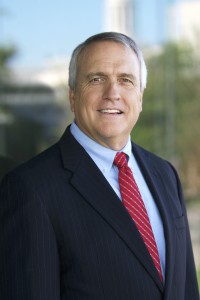
We are pleased to welcome Governor William “Bill” Ritter, Jr. to the Maui Energy Conference.
Bill Ritter, Jr. is the founder and director of the Center for the New Energy Economy (CNEE) at Colorado State University which launched on February 1, 2011. The Center employs an assistant director, three senior policy advisors, an executive assistant and a team of student researchers.
The Center works directly with governors, legislators, regulators, planners, policymakers, and other decision makers. It provides technical assistance to help officials create the policies and practices that will facilitate America’s transition to a clean-energy economy.
Ritter was elected as Colorado’s 41st governor in 2006, and built consensus to tackle some of the state’s biggest challenges. During his four-year term, Ritter established Colorado as a national and international leader in clean energy, by building a new energy economy. He signed 57 new energy bills into law, including a 30% Renewable Portfolio Standard and a Clean Air Clean Jobs Act that replaced nearly a gigawatt of coal-fired generation with natural gas. In total, the Colorado new energy economy created thousands of new jobs.
Ritter is a member of the board of the directors of the Energy Foundation and a senior fellow and member of the board of directors of the Advanced Energy Economy Institute. Ritter earned his bachelor’s degree in political science from Colorado State University (1978) and his law degree from the University of Colorado (1981). With his wife Jeannie, he operated a food distribution and nutrition center in Zambia. He then served as Denver’s district attorney from 1993 to January 2005.

by HEC Team | Jan 18, 2016 | 2016, News
The 2016 Maui Energy Conference will bring together some of the best minds in the energy sector from Maui County, the state, and the nation. “The focus of discussion will be Hawaii Clean Energy Initiative’s 100% Renewable Portfolio Standard and it implications for Hawaii’s energy future,” remarked Frank De Rego Jr. who is Director of Business Development Projects at MEDB and a member of the conference program committee. “The strengths of the conference over the years have been the high quality of its speakers and panelists, the ample time to network, and the availability of the videotaped panel sessions to the general public at the conclusion of the conference on the conference website.”
Program committee chair, Doug McLeod, DKK Energy Services, LLC, adds “we are talking about ‘everything but when’. Hawaii’s Renewable Portfolio Standard tells us when to achieve 100% renewables (by 2045). This conference looks at all the other questions: How; Where; Why; and Who Pays are just a few of the obvious issues. Within ‘how’ and ‘why’ are important sub-questions about fairness and respect for Hawaiian culture and the environment.” “We have all benefitted from having Mark Glick, Hawaii State Energy Office Administrator, on the Program Committee this year. He joins returning members Bash Nola, Colton Ching, Jay Griffin, Jonathan Koehn, Holly Benz, and Frank De Rego as we work on a thought provoking discussion for March.” “Finally, the County of Maui’s energy consultant Guernsey has been invited to present their recommendation with regard to ownership of the electric utility on Maui.”
The Program Committee is excited to have Utility Dive participate in the conference planning this year. The Utility Dive panel will look at lessons that utilities on the Mainland can draw from the Hawaii experience with perspectives from a Hawaii PUC Commissioner, Hawaii’s State Energy Office, and Hawaiian Electric Company.
Professionals in the energy industry as well as individuals with an interest in energy will find the three-day professional conference compelling. The conference program highlights include eight sessions with topics including: Defining 100% Renewables; Community Acceptance of 100% Renewables; The Social Impacts of Pursuing a 100% Renewable Future; Educating Toward 100% Renewable Energy; Investing in Hawaii; The Hawaii Renewable Experience—What Can Be Replicated; Integration of Distributed Energy Resources; and Maui: A Case Study—Is This Where We’re All Headed?
The exhibition piece of the conference gives networking opportunities to participants who want to generate business, or connect and collaborate to address common issues and concerns.
The conference’s third day will move outdoors with two optional Maui Sustainability Mobile Workshops.
A discounted registration rate—a savings of $100—is available for the month of January only.
Register now.
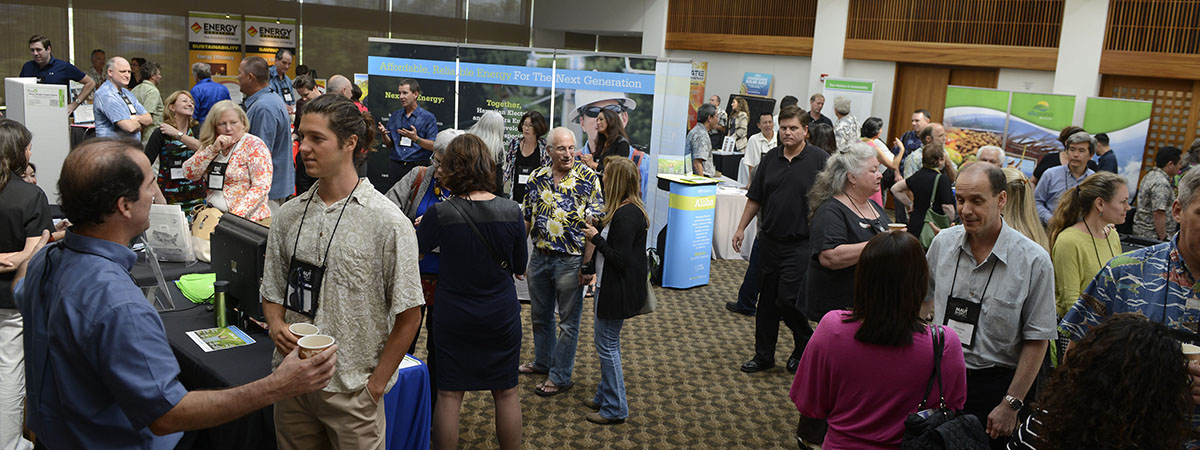
by HEC Team | Jan 11, 2016 | 2016, News
Plans are well underway for the 2016 Maui Energy Conference and the program committee is shaping a very compelling program! Stay tuned for further program announcements in the next few days. Our planning team has also been working with our corporate partners to confirm sponsorship and exhibit plans for the Conference. Exhibit space is filling quickly, too, so we’d love to hear from your organization soon!
Why Attend the Maui Energy Conference?
- Gain a competitive advantage—learn from thought leaders about key issues in the industry
- Connect and collaborate—forge partnerships to address common issues and concerns
- Showcase your organization—generate new business through Sponsorship and Exhibiting
We’ve assembled an impressive program, noted speakers, and plenty of networking opportunities. Take advantage of special savings in January!
REGISTER NOW
by HEC Team | Dec 22, 2015 | 2016, News
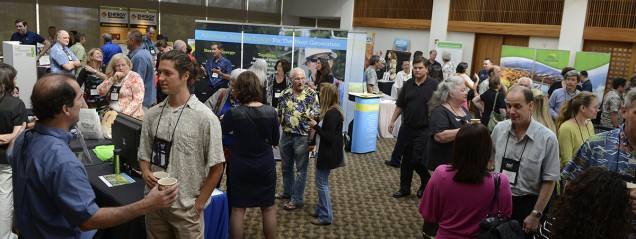
Aloha and Season’s Greetings,
We are pleased to announce the MAUI ENERGY CONFERENCE, March 16-18, 2016 at the Maui Arts & Cultural Center!
Join energy experts and stakeholders from across the U.S. to learn about the latest advances in clean energy and how Hawaii plans to achieve the new 100% RPS target. Explore Hawaii’s new energy planning model with us and see how it applies to your energy goals and landscape “back home.” The Conference will seek to answer:
- Are these targets realistic and are the utilities on board?
- How do you mitigate energy supply and price disruptions when transitioning from carbon based fuels to renewables?
- How important is having a diversified portfolio of renewable energy sources?
- How much will this really cost?
Visit the Program page for details on this year’s program.
And don’t miss the opportunity to boost your company’s presence at the conference with an early sponsor and exhibit commitment. The Sponsor & Exhibit Kit is available for download now!
Our Conference Program Committee and Team look forward to welcoming you in March and to answering any questions you may have in the meantime.
See you in the New Year,
The Maui Energy Conference Team
by HEC Team | Dec 16, 2015 | 2016, News
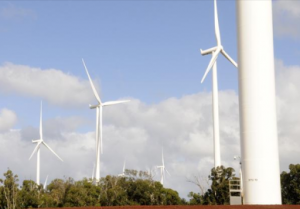
First Wind’s Kawailoa Wind project is seen in this file photo. Wind supplied 29.1 percent of all renewable energy in Hawaii in 2014.
Hawaii is a little more than a fifth of the way — 21.1 percent — to its new landmark goal of achieving 100 percent renewable energy by 2045, according to a new report.
The state’s previous target of 15 percent was surpassed two years early, in 2013, and in 2014, the figure increased to 21.1 percent.
In terms of resources, wind led the way by supplying 29.1 percent of the total renewable resource pie in 2014, followed by rooftop solar photovoltaics (27.3 percent), biomass (21.7 percent), geothermal (12.3 percent), hydroelectric (4.3 percent), commercial solar (3.4 percent) and biofuels (1.9 percent).
The 2015 Energy Resources Coordinator’s Annual Report, which highlights the state’s clean energy progress in the last 12 months, among other things, noted that Hawaii achieved 16.8 percent of its efficiency goal at the end of 2014.
The state must double this percentage by 2030 to reach the goal of a 30 percent reduction in energy consumption through efficiency measures.
The report also highlighted the 60 renewable energy projects located across the state, including 19 hydroelectric, 17 solar, nine wind, seven biofuel, three biomass, two waste-to-energy, two ocean and one geothermal.
These projects have the capacity to generate an estimated 150.5 million kilowatt-hours per month, which is enough to power about 292,874 Hawaii homes a year for the next 10 to 20 years.
The value of solar projects to the construction industry also was highlighted in the report, with a projection that $350.1 million, or 8.6 percent of total construction spending, will be spent on these types of projects by the end of 2015, up from $244.6 million, or 7.4 percent of total construction spending. The peak was reached in 2012, with $753.7 million, or 28.5 percent, of total construction spending.
Download Report: http://energy.hawaii.gov/wp-content/uploads/2014/12/DBEDT_2015ERC-Report_Nov2015.pdf


by HEC Team | Aug 8, 2015 | News
Originally posted on EcoWatch
Hawaii made waves earlier this year with the announcement that it plans to transition its electric grid to 100 percent renewables by 2045. This is the most aggressive target in the U.S. and it means that the state will serve as a testbed for bringing large amounts of variable renewables onto the grid. It should be watched closely by grid managers everywhere.
It’s no coincidence that Hawaii leads the nation in its renewable ambitions. As a group of islands, Hawaii faces unique energy challenges and it has worked closely with the U.S. Department of Energy to analyze the potential of solar energy and examine the challenges of integrating a variety of renewables into its energy mix.
From one perspective, an island seems like a hard place to use variable renewable energy like wind and solar. Island grids are usually isolated, so they can’t rely on power from the mainland grid when there’s no sun or wind. There are some exceptions, like the Danish island of Samso. Island grids generally have to pay more attention to backup generation and energy storage than mainland grids, raising the overall costs of renewables.
On the other hand, most islands rely on fuel imports to run their grid. These shipments of diesel, oil or natural gas are very expensive and anything that can reduce or eliminate them can mean big savings. It also means less reliance on imports, increasing energy security. So shifting to fuel-free renewables like solar and wind saves money on this side of the ledger.
How do these two factors balance out in practice? The answer is clear in the growing number of island communities around the world that are moving quickly to adopt renewables.
Read the full article on EcoWatch










